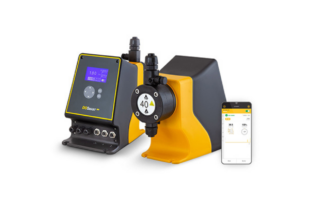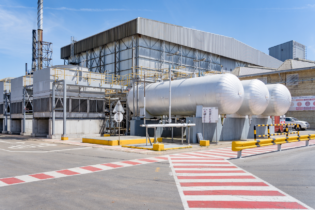It is widely accepted that whilst anaerobic digestion is a proven, effective and highly efficient treatment system, upsets in performance remain common. Process specialist, Claire Lipsett, explains how to unlock the potential of anaerobic digestion
A correctly run digester will efficiently convert up to 95% of organic material into a low odour, stabilised slurry, and produce a renewable resource in the form of biogas that can be flared or utilised on site. This eliminates the need for additional solid handling and large-scale pond systems, and limits reliance on non-renewable fuels. Digester disturbances, however, continue to represent a significant risk limiting the widespread adoption of this technology. Under the Department of Water Affairs (DWA) water use license conditions, the discharge of untreated effluent into water bodies, following reactor failure, can attract non-compliance penalties of millions of rand and, under special limit conditions, force full production shutdown of operations for lengthy reseed periods of the digester. Consequently, new applications are often over-engineered, under-loaded and relatively expensive. Despite decades of research into anaerobic digestion (AD) technology, a fundamental understanding of upstream effluent management, system sensitivity and basic process control continue to be highlighted as ongoing concerns, severely limiting the reputation and diversification of this technology. A well managed, high performance AD system provides clients with the opportunity to recover water and energy resources from their effluent. Secondary treatment systems in the form of activated sludge (AS), sequential batch reactor (SBR) and biofilter technology provide exceptional effluent treatment options, whilst water reclamation can be incorporated via ultra filtration and reverse osmosis technology.
Engineering systems
Talbot & Talbot, a wastewater engineering company, build and operate Upflow Anaerobic Sludge Blanket (UASB) digester treatment systems across a range of industrial sectors. Digesters vary in capacity from 1Mℓ/day to 5Mℓ/day, treating between 1 t and 25 t of COD/day, under general limits and special limit license conditions. The company believes that a high performance AD treatment system is attributed to a fully integrated approach, which begins with a systematic site water management plan and process optimisation.
Effluent sampling schedules are implemented via Talbot Laboratories to identify changes in effluent quality and monitor final discharge compliance. This guarantees the long-term treatment potential of UASB technology. More recently, the company designed and commissioned biogas recovery systems which capture the bi-product of digestion, methane, as a renewable, CO₂ neutral energy source. A 25 t digester with a biogas production of 6500Nm³/day can typically produce 52 t of steam per day, which supplements non-renewable energy usage by up to 15%. The realised value of a biogas recovery project (BRP) can be directly comparable to the cost of the fuel it replaces, the logistical cost of supplying fuel to remote locations, and the availability of electricity throughout Africa. This system, coupled to an existing AD, typically offers a buy-back period of less than two years and forms a reliable, constant energy source to the industry that directly offsets the cost of effluent treatment. Despite these benefits, the real value of BRPs is the renewed interest in AD technology, a deeper understanding of good effluent handling practises and an ongoing commitment to ensuring ADs reach its full treatment potential.







